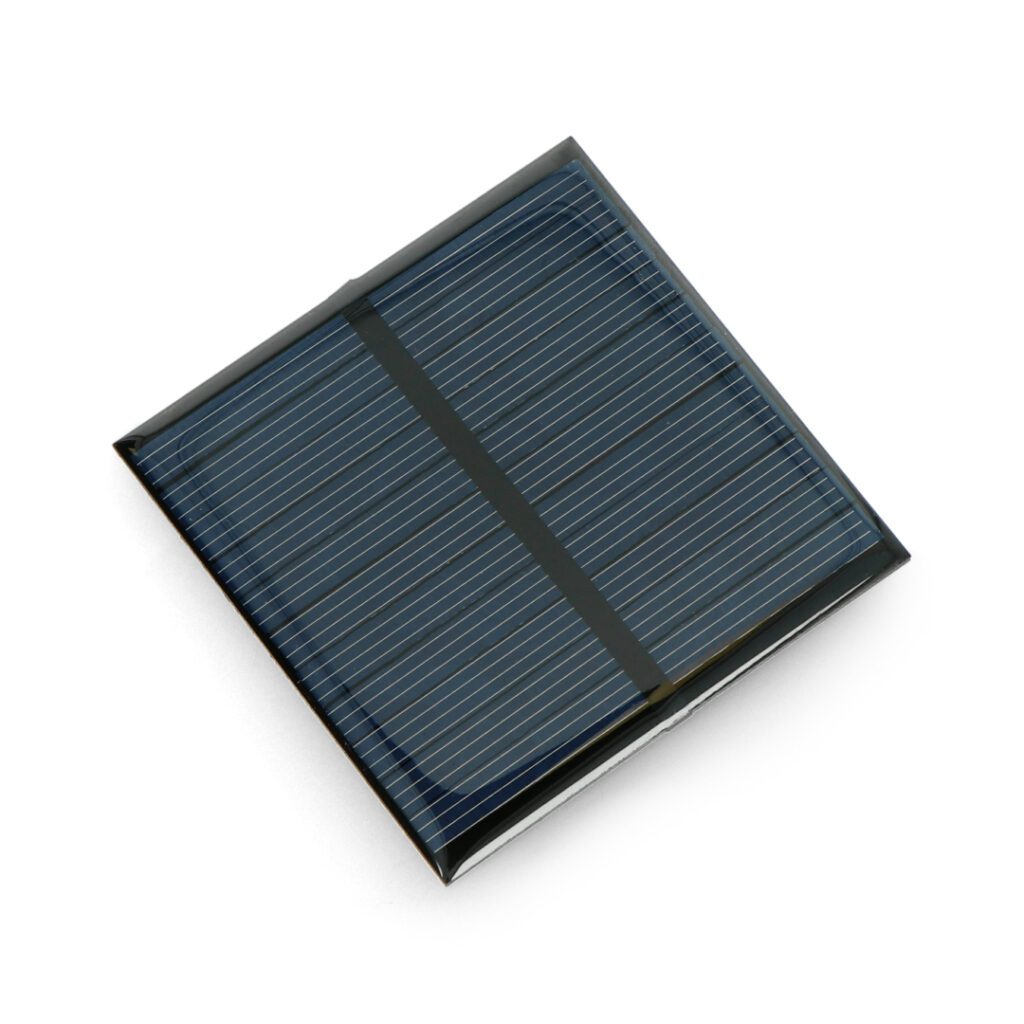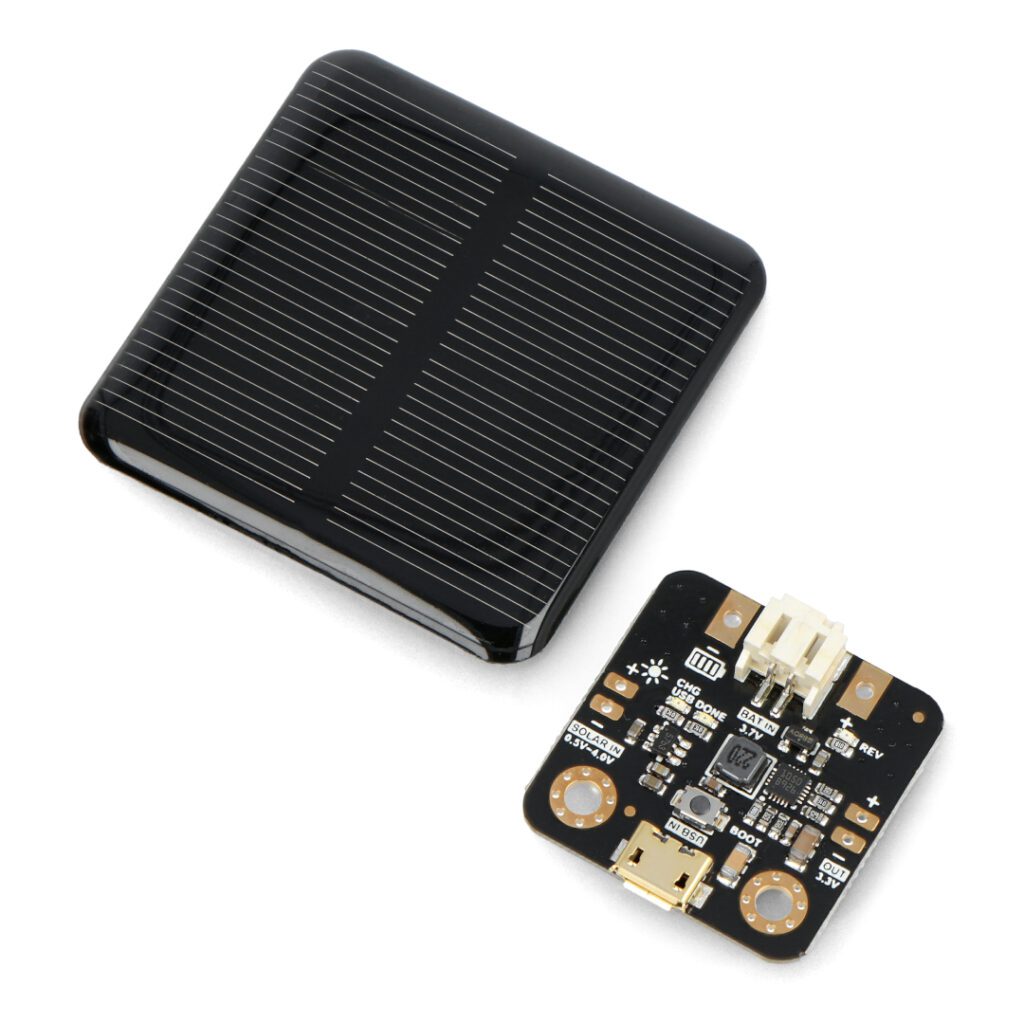Table of Contents:
The world of science and technology is constantly evolving, offering increasingly diverse solutions.
One area that has been of growing interest for many years – including in the electronics industry – is renewable energy, and photovoltaic panels are one of the greenest and most innovative sources of energy.
Wondering how you can use the cells in your project?
Today on the market you can easily find small photovoltaic panels that will charge batteries or power various devices.
Check out what you should know about them.
What are small photovoltaic panels?
Surely you know what standard solar cells are characterized by. Small photovoltaic panels work on a similar principle – they allow the conversion of solar energy into electricity, only that they are simply small in size.
They consist of several or a dozen photocells, which are responsible for converting solar radiation into electricity.
They also differ from traditional photovoltaic panels in the lower power generated.
The panels, available, for example, in the Botland store’s offer, typically range in size from a few to just over 25 cm, making them ideal for smaller projects where you have limited space.
Small photovoltaic panels are easy to integrate into a variety of electronic DIY projects, enabling creative exploration of solar energy applications.
As a result, they are becoming an increasingly popular choice for technology enthusiasts, electronic hobbyists and educators.
How can small photovoltaic panels be used?
Compact photovoltaic cells are widely used in various fields.
It is worth taking a closer look at the most popular areas of use of small solar panels:
1. electronic DIY projects
One of the main applications of small photovoltaic panels is DIY projects.
Thanks to their small size and easy integration with other electronic components, such as a Li-Pol charger, these cells can be used to power a variety of devices such as rechargeable batteries, powerbanks and small weather stations.
2. education
Small photovoltaic panels are also an excellent tool for teaching about renewable energy and the principles of photovoltaics.
They can be used in schools, educational workshops or home experiments to show how solar energy is converted into electricity.
With them you will create your first small solar power plant!
3. monitoring systems
Thanks to their small size, the compact cells are also used in surveillance systems such as outdoor cameras and motion sensors.
They can be used to power these devices in places where access to a traditional energy source is limited.
4 Portable chargers
Small photovoltaic panels will also work well as portable chargers.
They can be used during a camping trip, while hiking in the mountains, or other outdoor activities.
Thanks to their compact size, they are easy to carry, and the solar energy accumulated with them allows charging electronic devices.
What are the types of small photovoltaic panels?
Commercially available photovoltaic panels can be made of monocrystalline or polycrystalline silicon – the former is more common for compact models.
Small monocrystalline panels are characterized by higher efficiency, which means that they generate more energy with the same surface area compared to polycrystalline panels.
Polycrystalline panels, on the other hand, tend to be more economical.
In your search for the right product, you may also come across small thin-film panels.
They have lower efficiency than silicon panels, but are lighter and more flexible.
How to choose the right small photovoltaic panel?
Before buying, it is worth considering several issues related to photovoltaic panels.
The key aspect is their power and dimensions.
The power of the cell determines how much energy the model is able to generate, which is important in the context of powering specific devices.
Consider how much energy you need to operate your device.
Dimensions are also important, especially if you are working on a project with limited space – make sure you small photovoltaic panels will be easy to place in the planned construction.
In terms of installation, it will also be important the way the cells are connected.
W sklepie Botland znajdziesz models with a ready-made connector (e.g., DC 3.5 / 1.1 mm) or versions with pads for soldering wires.
Another aspect to consider is the voltage generated by the panel.
Make sure its voltage rating is compatible with the requirements of the device you plan to power.
If you plan to integrate a small photovoltaic panel into projects that require flexibility or mobility, consider choosing foldable models.
Today you can easily find compact solar cells on the market that meet all the requirements of your project.
How useful was this post?
Click on a star to rate it!
Average rating 0 / 5. Vote count: 0
No votes so far! Be the first to rate this post.





















